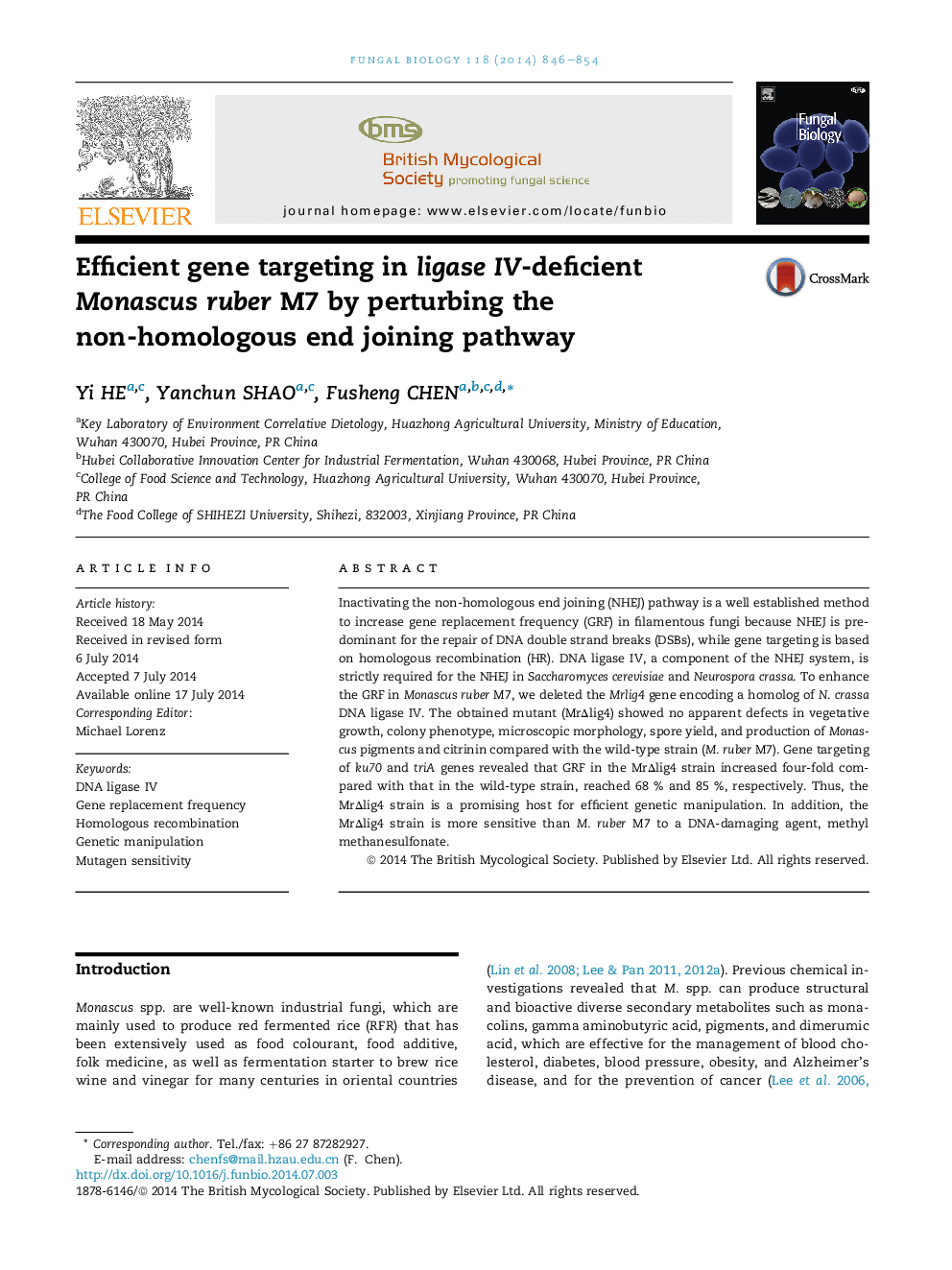| Article ID | Journal | Published Year | Pages | File Type |
|---|---|---|---|---|
| 4356997 | Fungal Biology | 2014 | 9 Pages |
•We firstly cloned and knocked out ligase4 gene from Monascus ruber.•Gene replacement frequency was highly increased (four-fold) in Δlig4-strain.•We constructed a promising host for efficient genetic manipulation in M. ruber.•The Δlig4-strain is more sensitive to methyl methanesulfonate than M. ruber.
Inactivating the non-homologous end joining (NHEJ) pathway is a well established method to increase gene replacement frequency (GRF) in filamentous fungi because NHEJ is predominant for the repair of DNA double strand breaks (DSBs), while gene targeting is based on homologous recombination (HR). DNA ligase IV, a component of the NHEJ system, is strictly required for the NHEJ in Saccharomyces cerevisiae and Neurospora crassa. To enhance the GRF in Monascus ruber M7, we deleted the Mrlig4 gene encoding a homolog of N. crassa DNA ligase IV. The obtained mutant (MrΔlig4) showed no apparent defects in vegetative growth, colony phenotype, microscopic morphology, spore yield, and production of Monascus pigments and citrinin compared with the wild-type strain (M. ruber M7). Gene targeting of ku70 and triA genes revealed that GRF in the MrΔlig4 strain increased four-fold compared with that in the wild-type strain, reached 68 % and 85 %, respectively. Thus, the MrΔlig4 strain is a promising host for efficient genetic manipulation. In addition, the MrΔlig4 strain is more sensitive than M. ruber M7 to a DNA-damaging agent, methyl methanesulfonate.
